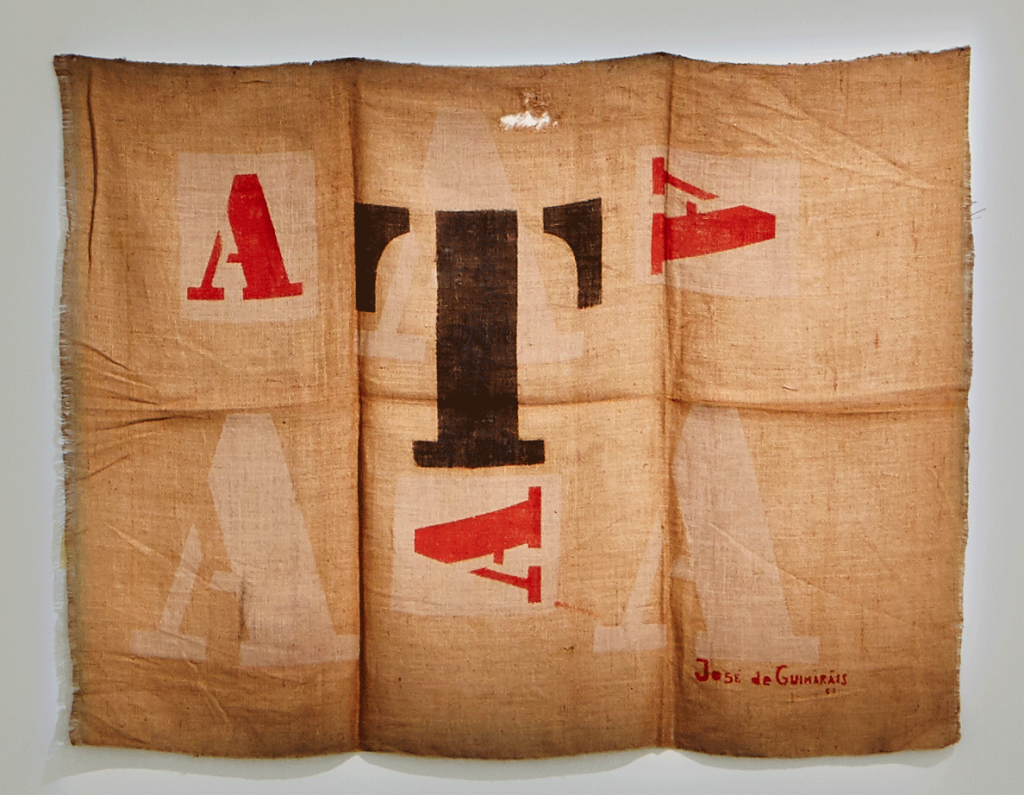
PT
José de Guimarães nasceu em Guimarães, em 1939. Vive e trabalha em Lisboa e Paris. Engenheiro de formação, estudou técnicas artísticas na Sociedade Cooperativa de Gravadores Portugueses. Permaneceu em Angola, entre 1967 e 1974, numa comissão de serviço militar, no contexto da guerra colonial. Participa em diversas manifestações culturais de vanguarda e, em 1968 publica o manifesto Arte Perturbadora! O seu trabalho de mais de cinquenta décadas está representado nas mais relevantes coleções institucionais em Portugal, e um pouco por todo o mundo. A sua proposta estética incide sobre cruzamentos com a arte de civilizações não ocidentais – africana, chinesa e mesoamericana- uma busca incessante de relações não verbais, a que não é estranha a atividade de colecionador a que se vem dedicando há várias décadas. Nos últimos dez anos, viu serem-lhe dedicadas exposições antológicas ou retrospetivas em Portugal, Alemanha, Suíça, Brasil, Angola, China, Japão, entre outros.
O período angolano de José de Guimarães, reúne um conjunto de trabalhos produzidos entre 1967 e 1974, que se apresenta com uma prática diversificada da pintura, em termos de suportes técnicas e materiais, mas sobretudo um forte pendor experimental e crítico que fundia a pop art europeia e os signos da cultura africana.
Em 1968, na exposição que realizou no Museu de Luanda, provoca grande surpresa pela criação elaborada de signos, letras, números, setas, silhuetas humanas. Uma parte substancial da produção do artista em Luanda, está ligada a processos de transferência de imagem, baseados em repetição e variação, onde conjuga gravura, pintura e estampagem de materiais pobres como a juta.
*As obras expostas fazem parte da instalação no Museu de Luanda em 1968.
ENG
José de Guimarães was born in Guimarães in 1939. He lives and works in Lisbon and Paris. An engineer by training, he studied artistic techniques at the Cooperative Society of Portuguese Engravers. He stayed in Angola from 1967 to 1974 on a military service commission in the context of the colonial war. He took part in various avant-garde cultural events and, in 1968, published the manifesto “Arte Perturbadora!” His work of more than fifty decades is represented in the most relevant institutional collections in Portugal and a little all over the world. His aesthetic proposal focuses on crossings with the art of non-western civilisations – African, Chinese and Mesoamerican – an incessant search for non-verbal relationships, to which the collecting activity to which he has been dedicated for several decades is no stranger. In the last ten years, he has had anthological or retrospective exhibitions in Portugal, Germany, Switzerland, Brazil, Angola, China and Japan, among others.
José de Guimarães’ Angolan period brings together a set of works produced between 1967 and 1974, which presented a diversified painting practice in terms of technical supports and materials, but above all a strong experimental and critical pendency that fused European pop art and the signs of African culture.
In 1968, at the exhibition he held at the Luanda Museum, he caused great surprise with his elaborate creation of signs, letters, numbers, arrows and human silhouettes. A substantial part of the artist’s production in Luanda is linked to processes of image transfer, based on repetition and variation, where he combines engraving, painting and stamping poor materials such as jute.
*The works exhibited are part of the installation at the Museum of Luanda in 1968.

